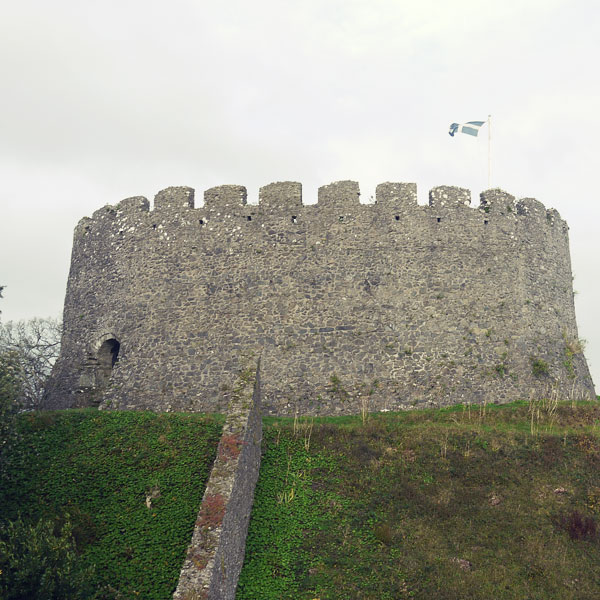There are more than 270 ancient monuments scheduled by English Heritage across the Duchy, many on Dartmoor and the Isles of Scilly. English Heritage manage 16 of the sites under an agreement with the Duchy.

The Great Tomb at Porth Hellick Down
Bants Carn Burial Chamber and Halangy Down Ancient Village – the remains of an ancient Iron Age village, above which there is a Bronze Age burial mound with entrance passage and inner chamber.
Innisidgen – two Bronze Age communal burial cairns.
Porth Hellick – a large and imposing Scillonian Bronze Age entrance grave, with kerb, inner passage and burial chamber all clearly visible.
The Garrison Walls – fortified walls encircling the headland west of Hugh Town, started around 1588 and added to during the period c1715-46 as part of the island's defences.
Harry’s Walls – an unfinished artillery fort, built above St Mary's Pool harbour in 1552-53.

Cromwell's Castle, Tresco, Isles of Scilly
Cromwell's Castle – this round tower is one of the few surviving Cromwellian fortifications in Britain, built after the conquest of the Royalist Scillies in 1651.
King Charles's Castle – the ruins of a mid-16th century coastal artillery fort, later garrisoned – hence the name – by Civil War Royalists.
The Old Blockhouse – substantial remains of a small 16th century gun tower protecting Old Grimsby harbour, vigorously defended during the Civil War.

Restormel Castle, Cornwall
Hurlers Stone Circles – three Bronze Age ceremonial standing stone circles, arranged in a line.
Launceston Castle – first built following the Norman Conquest when William I made his half brother Earl of Cornwall. It has since been used as the venue for the county assizes and jail, and witnessed the trials and hangings of numerous criminals, with the last execution in 1821.
Restormel Castle – built in the early 14th century as a symbol of wealth and status – and once home to the Black Prince, Edward, first Duke of Cornwall. A huge circular keep survives in good condition.
Tintagel Castle – the remains of a 13th century castle belonging to Richard, Earl of Cornwall, on the rugged north Cornish coast.

Berkhamsted Castle
Lydford Castle and Saxon Town – 12th century tower, long used as a prison.
Grimspound – a settlement from the late bronze age, with hut remains enclosed in a long circular stone wall.
Maiden Castle – the largest and finest iron age hill fort in Europe.
Berkhamsted Castle – the remains of a large, 11th century motte-and-bailey castle.

Poundbury is an urban extension to the Dorset county town of Dorchester, built on the principles of architecture and urban planning as advocated by The Prince of Wales in ‘A Vision of Britain’.
Read more
Most of the 27,300 hectares that make up Dartmoor have been owned by the Duchy since its creation in 1337, and in modern times it is agriculture rather than mineral extraction that dominates the use of the land.
Read more